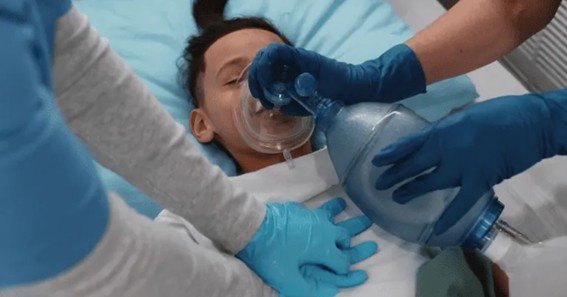In emergency medical situations, effective ventilation is crucial for patient survival. A bag-mask device, also known as a bag-valve-mask (BVM), is commonly used to provide positive pressure ventilation to individuals who are not breathing adequately or at all. Understanding how to properly deliver breaths using a bag-mask device is essential for healthcare providers and first responders.
Components of a Bag-Mask Device
A standard bag-mask device consists of:
- Self-Inflating Bag: A squeezable bag that re-expands on its own after compression.
- One-Way Valve: Ensures air flows from the bag to the patient without allowing exhaled air to return into the bag.
- Face Mask: Fits over the patient’s nose and mouth to create a seal for effective ventilation.
- Oxygen Reservoir (Optional): Stores supplemental oxygen to deliver higher concentrations when connected to an oxygen source.
Steps to Deliver Breaths Using a Bag-Mask Device
- Preparation
- Check Equipment: Ensure all components are intact and functioning properly.
- Position the Patient: Place the patient on their back on a firm surface. Use the head-tilt, chin-lift maneuver to open the airway, unless a spinal injury is suspected.
- Mask Placement
- Select Appropriate Mask Size: Choose a mask that fits the patient’s face, covering the nose and mouth without extending over the chin or eyes.
- Create a Seal: Use the “E-C clamp” technique—form a “C” shape with your thumb and index finger around the mask, and an “E” shape with the remaining fingers to lift the jaw, ensuring a tight seal.
- Delivering Breaths
- Squeeze the Bag: Compress the bag smoothly over one second, observing for chest rise to confirm air entry into the lungs.
- Ventilation Rate: For adults, deliver one breath every 5 to 6 seconds (10-12 breaths per minute). For children and infants, deliver one breath every 3 to 5 seconds (12-20 breaths per minute).
- Avoid Over-Inflation: Use only enough volume to see the chest rise; excessive volume can lead to complications like gastric inflation.
- Monitoring and Adjustments
- Observe Chest Movement: Ensure the chest rises with each breath, indicating effective ventilation.
- Check for Air Leaks: Listen for escaping air and adjust the mask or hand positioning to maintain a proper seal.
- Coordinate with Compressions: If performing CPR, synchronize breaths with chest compressions as per current guidelines.
Common Challenges and Solutions
- Maintaining a Proper Seal: Facial hair, trauma, or anatomical variations can hinder a good seal. Using two-person techniques can improve effectiveness, where one rescuer holds the mask with both hands while the other compresses the bag.
- Airway Obstructions: Utilizing airway adjuncts like oropharyngeal or nasopharyngeal airways can help keep the airway open during ventilation.
- Gastric Inflation: Delivering breaths too rapidly or with too much force can cause air to enter the stomach, increasing the risk of aspiration. To minimize this, provide gentle, controlled breaths over one second.
Conclusion
Proficiency in using a bag-mask device is vital for effective emergency ventilation. By adhering to proper techniques and being aware of potential challenges, healthcare providers and rescuers can significantly improve patient outcomes during critical situations. Whether in a clinical setting or an emergency situation, understanding how breaths are delivered using a bag mask device can make a significant difference in patient outcomes.
FAQ
-
What is the recommended ventilation rate for adults using a bag-mask device?
- Deliver one breath every 5 to 6 seconds, totaling 10-12 breaths per minute.
-
How can I ensure a proper seal with the mask?
- Use the “E-C clamp” technique and select an appropriately sized mask to fit the patient’s face.
-
What should I do if the patient’s chest doesn’t rise with each breath?
- Check for airway obstructions, reposition the head, and ensure a tight mask seal.
-
Why is it important to avoid over-inflating the lungs?
- Over-inflation can lead to gastric inflation, increasing the risk of aspiration and decreasing ventilation efficiency.
-
Can a bag-mask device be used without supplemental oxygen?
- Yes, it can deliver room air, but attaching it to an oxygen source increases the concentration of delivered oxygen, enhancing ventilation effectiveness.










